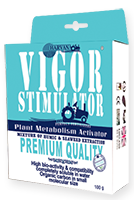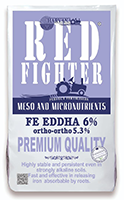What is slow release fertilizer

What is Slow Release Fertilizer
Slow-release fertilizer is a type of fertilizer designed to release nutrients gradually over a long period of time. This release helps provide plants with an even supply of nutrients, improves nutrients uptake efficiency, and reduces the need for over-fertilization and nutrients leaching with runoff. Slow-release fertilizers are made with granules or pellets that are coated with a semi-permeable polymer or resin. This coating controls the release of nutrients into the soil. These fertilizers release nutrients gradually, minimizing nutrients leaching. The rate of release depends on factors such as temperature, moisture, and microbial activity in the soil. Slow-release fertilizers are usually produced in solid granular or granular form. Slow-release fertilizers have a slower release rate of nutrients than conventional water-soluble fertilizers. Slow-release fertilizers contain the macronutrients and micronutrients that plants need to grow. Macronutrients such as nitrogen, phosphorus, and potassium (NPK) are needed in larger amounts. Secondary macronutrients include sulfur, calcium, and magnesium. Micronutrients such as iron, manganese, zinc, and copper are necessary in much smaller amounts
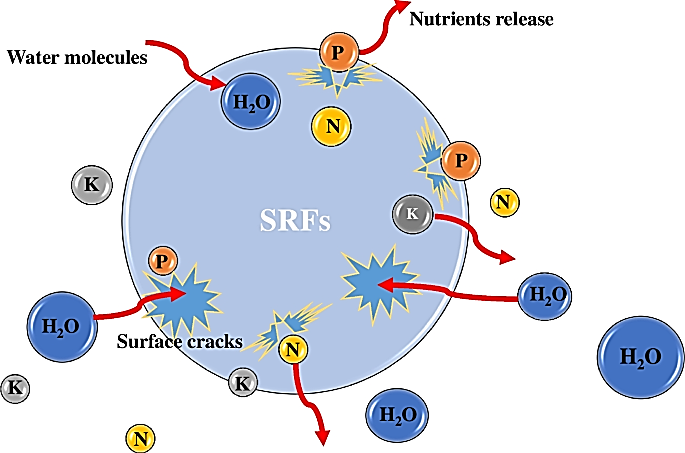
Why Do we Choose Slow-Release Fertilizer
Slow-release fertilizers have several benefits for plants and for gardeners. By providing a gradual and consistent supply of nutrients, they promote balanced growth and development and minimize the risk of nutrient deficiencies or excesses. This release also reduces the frequency of fertilizer applications, saving time. Slow-release fertilizers are environmentally friendly because they minimize nutrients runoff, ensuring that plants use nutrients efficiently and reducing the risk of water pollution. Slow-release fertilizers release nutrients gradually. Since the nutrients are released slowly, there is less risk of them being washed away by rain or irrigation. This reduces the likelihood of nutrients runoff into waterways. Slow-release fertilizers can promote sustainable, healthy plant growth by providing a constant source of nutrients. This can lead to stronger plants that are better able to resist pests and diseases. By reducing the frequency of fertilizer applications and minimizing nutrients runoff, slow-release fertilizers are generally environmentally friendly. They help maintain soil health. When these fertilizers are applied, the nutrients are released slowly, allowing plants to receive the nutrients they need slowly
Common Nutrients in Slow-Release Fertilizer
Common nutrients found in slow-release fertilizers include
Nitrogen (N): In slow-release fertilizers, nitrogen is essential for leaf growth and overall plant vigor. Slow-release fertilizers contain nitrogen in forms that are not immediately available to plants. Instead, the nitrogen is released gradually through mechanisms such as microbial activity, chemical decomposition. The forms of nitrogen in slow-release fertilizers include
Urea Formaldehyde(UF): A common slow-release nitrogen source that gradually breaks down to release nitrogen in the form of ammonia and benefits microbial activity in soils that are temperature dependent
Coated Urea: Urea granules are coated with materials such as sulfur or polymers to control the rate of release
Isobutylidene diurea (IBDU): A water-soluble compound that slowly hydrolyzes in soil, releasing nitrogen over time
Methylene Urea: Another slow-release form that gradually breaks down in soil
Phosphorus (P): Important for root growth, flowering and fruiting. Slow-release phosphorus sources include various phosphate compounds that gradually release phosphorus as they break down in the soil. Phosphorus is a vital macronutrient required for energy transfer, photosynthesis and nutrient movement in plants. It is a key component of ATP (adenosine triphosphate), nucleic acids (DNA and RNA) and phospholipids in cell membranes. Common sources of phosphorus in slow-release fertilizers include polyphosphates, rock phosphate or coated phosphorus compounds. The phosphorus in slow-release fertilizers promotes a strong root system which improves nutrient and water uptake, leading to healthier and more resilient plants
Examples of slow-release fertilizers containing phosphorus include
Organic phosphorus fertilizers: Such as bone meal and fish meal, which release phosphorus very slowly, are useful for long-term soil improvement
Potassium (K): Essential for overall plant health, disease resistance, and water regulation. Slow-release potassium sources include covered potassium nitrate and potassium chloride. Potassium is an essential macronutrient supplied to plants through potassium fertilizers and plays a vital role in various physiological processes, including enzyme activation, photosynthesis, nutrient transport, and water balance. In slow-release fertilizers, potassium is released gradually, which can help reduce nutrient runoff and leaching losses. Potassium plays an important role in slow-release fertilizers and contributes to plant health and growth in a variety of ways. Potassium is essential for various physiological processes in plants, and its slow release helps maintain optimal levels in the soil. Slow-release potassium fertilizers are especially useful for crops with long growing seasons, such as fruit trees, turfgrass, and perennials
Examples of slow-release potassium fertilizers include
Sulfate of Potash (SOP): This fertilizer is chloride-free and is commonly used for chloride-sensitive plants. SOP provides a steady release of potassium, making it ideal for lawns, vegetable, and landscape beds
Potassium Halite: A natural mineral fertilizer that acts as a slow-release source of potassium along with other elements such as sulfur, magnesium, and calcium
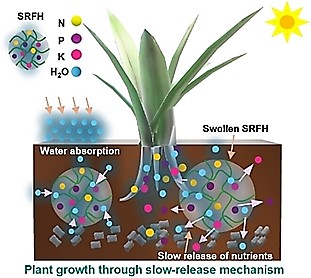
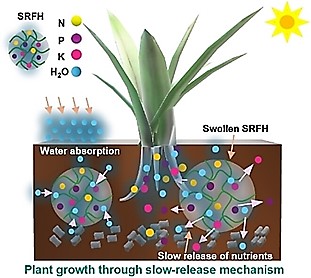
Calcium (Ca): It is important for cell wall structure and growth. Slow-release calcium sources include gypsum (calcium sulfate) and lime (calcium carbonate). Calcium plays an important role in slow-release fertilizers and contributes to plant health and fertilizer effectiveness. Calcium can help neutralize acidic soils by increasing pH, improving soil structure and making nutrients more available. Calcium in the soil plays a vital role in soil structure and plant nutrition. The presence of calcium also helps reduce soil acidity by exchanging with hydrogen ions, thereby increasing soil pH and balancing nutrients availability. Calcium promotes water infiltration, which is beneficial for root growth and microbial activity. Calcium can increase the uptake of other nutrients such as nitrogen and potassium and improves overall fertilizer efficiency. Calcium helps plants cope with environmental stresses such as drought or salinity by maintaining cellular integrity and function
Slow-release organic fertilizers that naturally contain calcium: Such as bone meal and composted animal manure. These fertilizers release calcium gradually as organic matter in the soil breaks down.
Magnesium (Mg): Essential for photosynthesis and enzyme activation. Slow-release magnesium sources include magnesium oxide and magnesium sulfate. Magnesium is a central component of chlorophyll and is responsible for photosynthesis. Magnesium acts as a cofactor for many enzymes involved in energy transfer, protein synthesis, and nucleic acid synthesis. This makes it vital for various metabolic processes in plants. In slow-release fertilizers, magnesium is often included in compounds that release nutrients gradually over time. This ensures a steady supply of magnesium to plants, reduces the risk of nutrient leaching, and makes the fertilizer more efficient. Magnesium contributes to the cation exchange capacity of the soil, which is the ability of the soil to retain and exchange cations (positively charged ions). Higher cation exchange capacity generally means better retention and availability of nutrients. Examples of slow-release magnesium fertilizers include
Granomag® (Magnesium oxide-based): Contains 57% magnesium oxide and is used in fertilizer blends. It releases magnesium very slowly and is typically used during turf renovation
Polysulphate fertilizer: A slow-release mineral fertilizer providing sulfur, magnesium, potassium, and calcium, reducing magnesium leaching and increasing magnesium uptake by plants
Sulfur (S): Important for protein synthesis and enzyme activity. Slow-release sulfur sources include elemental sulfur and sulfate compounds. Sulfur plays an important role in slow-release fertilizers, aiding plant nutrition and the fertilizer release mechanism. Sulfur is a vital macronutrient required for plant growth. Sulfur is a key component of amino acids such as cysteine and methionine, which are essential for protein synthesis. Sulfur also plays a role in chlorophyll production, enzyme activation, and the formation of vitamins and coenzymes. Sulfur deficiency can lead to chlorosis (yellowing of leaves), stunted growth, and reduced yield. Incorporating sulfur in slow-release fertilizers ensures a steady supply of this nutrient over time and prevents its deficiency. Sulfur can help lower soil pH over time as it oxidizes to form sulfuric acid. This can be useful in alkaline soils where a lower pH is needed for optimal plant growth
Examples of slow-release sulfur fertilizers include
Organic sulfur sources, such as manure: this kind of fertilizer release sulfur gradually, which enhances soil structure and boosts microbial activity over time
Micronutrients Fertilizers: These fertilizers include trace elements such as iron (Fe), manganese (Mn), zinc (Zn), copper (Cu), molybdenum (Mo), boron (B), and chlorine (Cl). Slow-release micronutrients are often chelated or coated to ensure gradual release
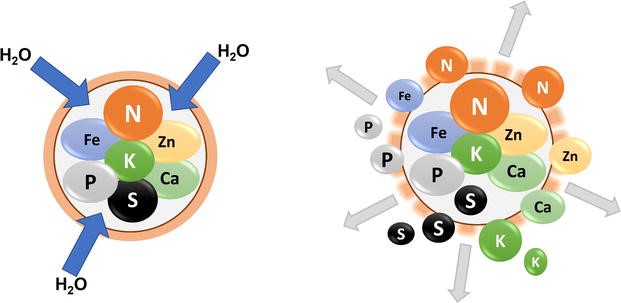
Different Types of Slow-Release Fertilizers
Slow-release organic fertilizers
Compost: Decomposed organic matter that slowly releases nutrients as it continues to decompose in the soil
Manure: Animal waste that releases nutrients over time as it decomposes
Bone meal: A phosphorus-rich fertilizer made from ground animal bones that releases nutrients slowly
Fish meal: A nitrogen-rich fertilizer made from processed fish, providing a slow release of nutrients
Blood meal: A high-nitrogen fertilizer made from dried animal blood that releases nutrients gradually
Slow-release fertilizers based on minerals
Rock phosphate: Phosphate rock, also known as phosphorite, is a sedimentary rock that contains a high concentration of phosphate minerals, primarily apatite. The main use of phosphate rock is to produce phosphate fertilizers, which provide phosphorus in a form that plants can absorb, facilitating the energy absorption and photosynthesis necessary for crop growth
Greensand : Greensand is a type of sand or sandstone that is bluish-green in color and is due to the presence of a specific mineral called glauconite. Glauconite is an iron-potassium silicate and one of its characteristics is that it has little resistance to erosion, making greensand relatively soft and loose. This material usually forms in shallow marine sediments and can contain significant amounts of potassium and phosphate. For this reason, greensand is used in agriculture as a natural fertilizer and soil conditioner. A mineral fertilizer rich in potassium and other trace minerals that slowly releases nutrients over time
Biochar-based fertilizers
Biochar: A charcoal-like material that improves soil structure and slowly releases nutrients as it decomposes. Biochar is highly porous, lightweight, and chemically unique, which, depending on the raw material and production conditions, can increase soil aeration, water retention, nutrients availability, and reduces greenhouse gas emissions from the soil
Slow-release hybrid fertilizers
Coated or encapsulated fertilizers
Polymer-coated fertilizers (PCF) :Nutrients are coated with a polymer layer that controls the release rate based on temperature and humidity. An example is polymer-coated urea (PCU)
Sulfur-coated fertilizers (SCF): Nutrients are coated with sulfur, which slows the release as the coating breaks down. Sulfur-coated urea (SCU) is a common example
Wax or resin-coated fertilizers: Nutrients are coated with wax or resin, which slowly breaks down and releases nutrients
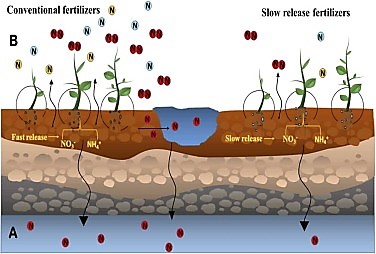
Benefits of Slow-Release Fertilizer
Nutrients efficiency
Slow release nutrients: Slow release fertilizers provide nutrients over a long period of time. This reduces the risk of nutrients leaching and waste
Better absorption: Plants can absorb nutrients more effectively because they are released at the same time as their growth needsPreventing
phytotoxicity
Unlike other fertilizers, slow-release fertilizers are less likely to cause root burn or leaf damage due to excessive nutrients concentratio
Balanced Growth: Consistent nutrients availability promotes healthier, more balanced plant growth
Environmental benefits
Runoff Reduction: Slow-release fertilizers minimize nutrients runoff into waterways, reducing the risk of water pollution
Affordability
Less waste: Nutrients are used more efficiently, reducing the need for frequent purchases
Long-term savings: Fewer applications and reduced risk of plant damage can save money over time
Improving soil health
Sustainable nutrients level: Slow-release fertilizers maintain consistent nutrients level in the soil and promote microbial activity and soil structure
Reducing salinity: They are less likely to cause salt accumulation in the soil compared to other fertilizers
Adaptability: Suitable for various plants: Slow-release fertilizers can be used for a wide range of plants, including lawns, gardens
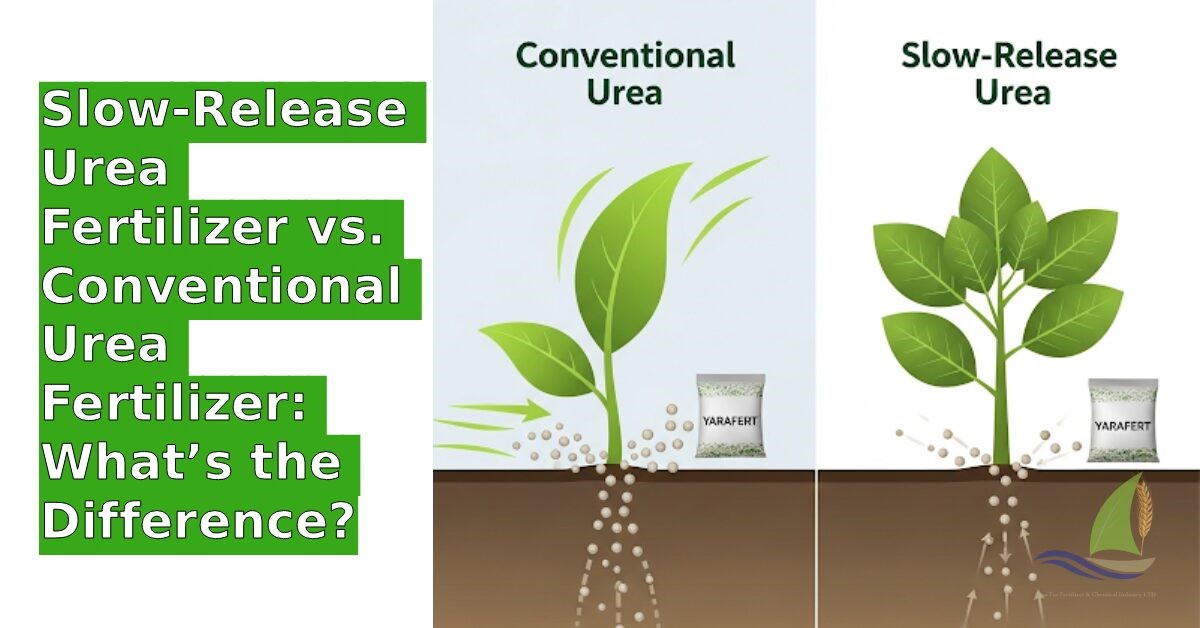
Disadvantages of Slow-Release Fertilizer
Higher cost: Slow-release fertilizers are usually more expensive than traditional fertilizers due to specialized manufacturing processes
Slower initial response: Plants may take longer to recover as nutrients are released gradually, which can be a disadvantage if quick results are needed
Potential for over- or under-fertilization: If not applied properly, there is a risk of over-fertilization, which can harm plants and the environment, or under-fertilization, which can lead to nutrients deficiencies
Limited availability: In some areas, slow-release fertilizers may not be as readily available as traditional fertilizers, limiting their use
Environmental concerns: While moste of slow-release fertilizers reduce leaching, they can contribute to environmental pollution if not managed properly, especially in waterlogged or highly permeable soils
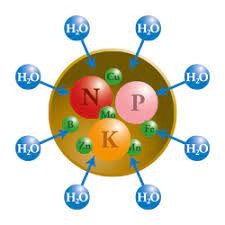
Conclusion
Slow-release fertilizers provide a continuous and stable supply of nutrients to plants over a long period of time, which promotes healthier and deeper root growth and reduce the risk of nutrient burn or environmental pollution from runoff or rapid nutrient leaching. The effectiveness of these fertilizers depends on factors such as soil temperature and moisture. Overall, slow-release fertilizers offer environmental benefits and improved nutrient efficiency, especially in long-term agricultural and horticultural use

